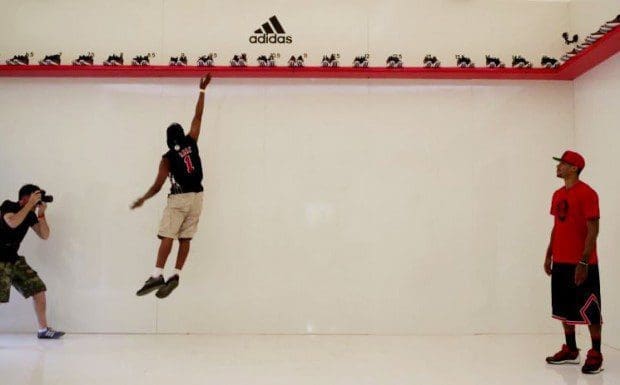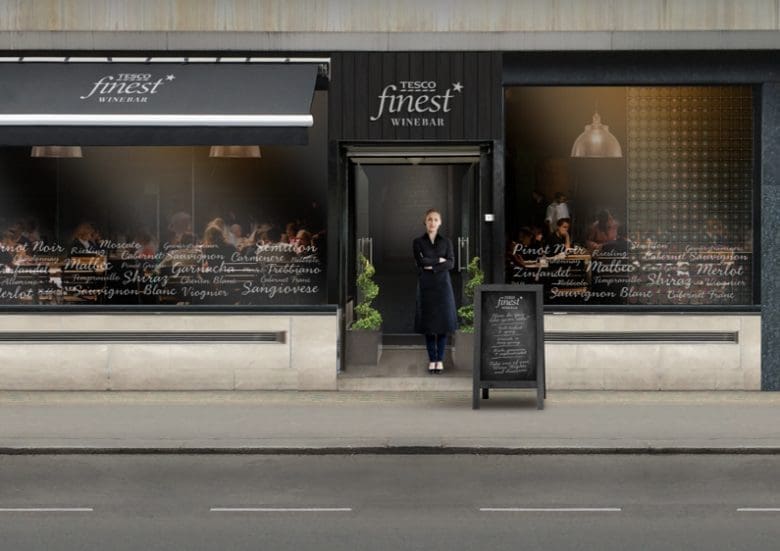You may have heard the term Experiential Marketing floating about a lot lately, but do you actually know what it means? A study shows that marketers expect to allocate up to 50 percent of their budgets for brand experience, so it’s high-time that you knew exactly what it means, and more importantly, how you can use it to benefit your marketing strategy.
Some people have defined Experiential Marketing as anything you can physically interact with, which rules out anything that sits purely online. Therefore, although this blog post is not a piece of Experiential Marketing, some might say that if I go into the middle of Maidenhead today and sing a song about this blog, then that would be Experiential Marketing. However, wouldn’t that simply be a PR stunt (a very annoying one, because I can’t sing) or would it be Experiential Marketing?
David Moth said that Experiential Marketing is:
“all about creating a closer bond between an individual or a group, and a brand, by putting the consumer or prospective consumer in an immersive branded experience”
Which is pretty much, spot on!
By involving people in an emotional experience with your brand, they are more likely to associate that emotion with you. So if you make them feel happy and confident, then they will be more likely to build a happy and confident brand loyalty to you; which would result in a stronger possibility of sales further down the line.
Examples of Experiential Marketing done well:
Adidas
Adidas organised the “D Rose Jump Store” in London to promote Derrick Rose’s signature Adidas sneakers. Fans had the opportunity to win a free pair of the signature sneaker if they could jump 10 feet to reach them.

Disney
Disney recreated clinics from its TV show Doc McStuffin, in various Toys R Us stores across the country, where Children were given an immersive experience where they took the role of Doc and diagnosed what was wrong with Big Ted. 8,000 children took part and it created a 5.3% increase in the ‘propensity to buy merchandise’.

Sensodyne
Sensodyne set up ‘The Great Sensitivity Test’ in London:
- In Zone 1, people could get a sensitivity check with a dentist, and obtain free samples of the new product.
- In Zone 2, people could have a photo with a giant tooth.
- In Zone 3, Sensodyne host the world’s largest oral hygiene lesson!
The event was a huge product awareness success, achieving 150 media mentions and distributed 6,500 free samples.
How can you use Experiential Marketing?
Sampling Campaigns:
Tribe’s managing director Chris Russell wrote in Marketing Week that according to his research 48% of people say they are more likely to buy a new product if they can try it first. Therefore product samples are a must in any experiential campaign.
To target Millennials:
It can be extremely hard to engage with millennials because they tune out most forms of traditional marketing very easily. However, a study from the Harris Group reported that 72% of millennials would rather choose an experience over a material item. Which means it’s go-time for any marketing teams out there looking to connect with millennials.
Repetition and consistency:
The impact of your experience will be much higher if you create it more than once. People will associate you more with that experience, which in turn, will increase brand loyalty.
A Cohn & Wolfe study reported consumers felt that “authenticity” was more important to them than things such as “product uniqueness,” “product utility” and “popularity, meaning that consistency is key if you want to come across as a trustworthy and memorable brand.
Authenticity also comes from the experience your customers have with you, rather than making it a sales event, Experiential Marketing works best when it is designed to educate and share a product with your consumers rather than get something from them.
Occasion-based strategies:
Historically, big liquor companies like made their strategies around categories of alcohol, for example, vodka or tequila. However, the Liquor industry is finding that consumers are less loyal to individual brands and price points. Following this change, the industry’s marketing strategy is shifting from a brand-focused approach to an occasion-based strategy, to become more experiential. For some marketers, these “occasions” include: Let Loose, High-End Drinks, Hanging Out, Out to Impress, and Sharing a Drink. Absolut Vodka, would fit into the Let Loose occasion group, whereas Armand De Brignac Champagne would fit into the Out to Impress occasion. Armand De Brignac’s sole aim would, therefore, be to outshine all other alcoholic beverage brands who might be in the “Out to Impress” group, by using VIP events and drinking pop-ups (like Tesco’s Finest Pop Up Bar, below!)

Go to your customer:
There is no point in creating an experience for your prospective customer in a location where they would never go. It’s crucial that you know your customer well in order to be present in their world, and so that you are sharing your brand with your prospective customer in a context that they enjoy. For example, if your consumer is a millennial, then integrate yourself into spaces they would attend like festivals, concerts, sporting expos and university campuses.
Top Tips for Experiential Marketing:
- Collaborate with another brand or a blogger/vlogger who can make your experience better.
- Find a way to remind someone that they participated; photos, videos – that way you can follow up on potential leads
- Aspirational experiences can associate your brand with a feeling of never settling for the ordinary. To do this, you would just need to build an experience around what your target audience might aspire to be or do.
- B2B? Let them experience your product or service first hand. 65% of people think that live events help them understand a product, so help them see the function in your product so that they’ll have to buy from you!
- Use a branded hashtag to get people talking about the experience
- Add value to your ‘experiencers’ – they’re more likely to participate if the experience provides them with value.
- Keep it local to your business, and give back to your community
- Target the right audience, in the right manner.
Are there any problems with Experiential Marketing?
The only problem with Experiential Marketing is that it can be hard to measure, you may not convert these ‘experiencers’ until 3 months time. Yet, the Customer Lifetime Value, one of the most valuable metrics of all, can be immensely increased by Experiential Marketing as the experience they associate with you, will keep them coming back for more.
So what are you waiting for? Go and give them an experience of a lifetime, so that they become your customer for a lifetime!
Thanks for reading!
Kayleigh




